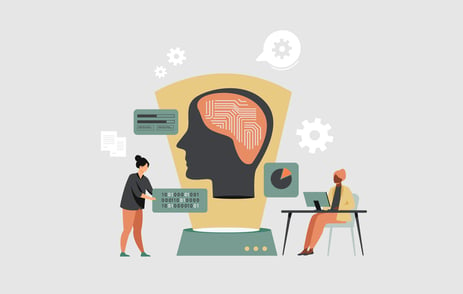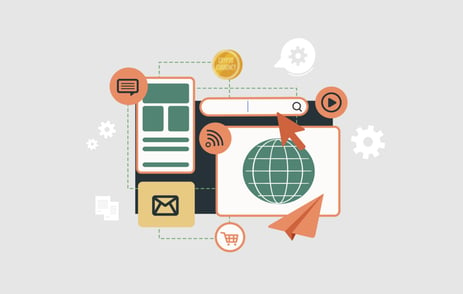digitalNow 2022 kicked off with a day focused on AI – the technological foundations that make it work, the various applications associations can start working with and the mindset shifts required to begin implementing it in your organization. While AI can seem novel and futuristic, the reality is that artificial intelligence is already a significant part of our lives – from the shopping suggestions on Amazon to those fraud alerts you get from your credit card.
The good news, however, is, as Day 1 Keynote Neil Sahota says, “that doesn't mean you can’t catch up and leapfrog others.”
‘AI Isn't a Silver Bullet’
Like most buzzwords, AI is often thought of as a quick fix to any and all issues for associations. However, like most things on a “hype train,” the reality is it only works based on the data your organization has and your understanding of it.
Sahota says that while AI is widely used today, there are still challenges, including:
- Do we have enough data?
- Do we have the subject matter experts needed to provide context?
- Are there biases affecting the data we do have?
Although many of these challenges still pose a concern for organizations everywhere, they can be the pathway to growth. Two of the ways that can happen is through automation and innovation. Automation can help streamline processes for your association, while innovation can change those processes for the better, providing your organization with unparalleled growth.
Start With Small Steps, But Start!
Paul Roetzer was our second keynote of the day, with a deep dive into next-gen association marketing. He posed that 80% of what we do daily will be intelligently automated to some extent in the next 3 to 5 years.
So how do associations know what tasks can be taken over by AI?
Roetzer says to choose tasks that are data-driven, repetitive and make a prediction.
For associations, one way this can translate is with your emails. Determining the best time to send, what subject line to use and what copy will engage your members and lead them to take action all require predictions, and that can all be easily handled by AI.
Another important note in his talk was that technology decisions don't need to come down from the C-suite. Roetzer says, “You can become the change in your organization – don’t wait for the business world to catch up.” So, look for opportunities where AI can help, and begin experimenting as soon as possible.
Understanding the Law of Accelerating Returns
Before we dove into the keynotes, Blue Cypress Chairman Amith Nagarajan opened the day with a challenge to change the way we think. While many organizations often have a scarcity mindset – ”if someone gets a slice of the pie, there’s less for me” – the truth is we’re in a time of abundance.
We have more access to technology and information than ever before, leading to accelerating returns in every sector.
Because technology builds upon itself, the speed of innovation is unprecedented. Where computers were once only able to handle a few computations a second, they can now handle billions, and computing power will continue to grow, surpassing that of all human brains combined by 2045.
So what does that mean for associations as we begin thinking of the future?
As more of these technologies converge, they see accelerating returns, evolving and growing exponentially — yearly. The AI, for example, that we see today will evolve entirely in a matter of years, which is why waiting for it to be perfected can quickly make your organization obsolete.
The Misconceptions Around AI
Finally, and most importantly, many of our sessions tackled another big problem for artificial intelligence – misconception.
Whether that’s the fear of sentient, “Terminator”-like programs taking over, overly complex use-cases that require a computer science degree, or the fear that automation will eliminate jobs in your organization, the reality is these misconceptions cannot be further from the truth.
Not only is AI more accessible than ever, with tools for just about any task or project your association may have, you don’t need a crazy amount of machine learning experience to use them.
And that also solves the other problem – AI is less artificial and more hybrid. Meaning it still requires input from a human, and instead of eliminating jobs, it eliminates repetitive tasks, so you can focus on the more complex projects that truly move the needle in terms of benefits to your members.

October 4, 2022


